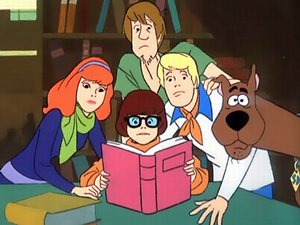
The Horror in Scooby-Doo
Scooby-Doo is the mascot of the teenage sleuthing group Mystery Incorporated. As a child, I habitually watched reruns of Scooby-Doo, Where Are You! (1969) on Saturday mornings. As an avid horror fan today, Scooby-Doo was my gateway into the genre, although I did not become serious about the horror genre until high school. Naturally, then, is Scooby-Doo a horror-based cartoon? It certainly has the aesthetics!
Analysis of Title Sequence
The title sequence, or opening sequence, has a vivid gothic presentation despite the campiness of the song lyrics. The appearance of skulls and castles stirs images of hauntings and the supernatural, which are things everyone associates with horror. The visages of ghosts and other phantasmagoric entities are the perfect staging grounds for a horror cartoon. Does this mean Scooby-Doo was intended to be scary? Well, the answer is complicated because what is scary is ultimately subjective.
Phantasmagoria or Prestidigitation?
Definitions
Phantasmagoria generally refers to the following: "1: an exhibition of optical effects and illusions 2) a: a constantly shifting complex succession of things seen or imagined b: a scene that constantly changes 3): a bizarre or fantastic combination, collection, or assemblage." Prestidigitation usually references: "sleight of hand, legerdemain." Sleight of the hand itself means trickery, implying a conscious or deliberate act.
Illusions and Trickery in Scooby-Doo
It becomes apparent that the "monsters" showcased in the Hanna-Barbera cartoon are usually people in costumes. Are their costumes so effective as to induce terror in others, or is there something more sinister at play? Psychology Today indicates that fear is a natural response to physical and emotional danger. Fear is also genetically inherited, which means common phobias today are the byproduct of thousands of years of human evolution. So, why does the appearance of a spectre or a zombie frighten someone in Scooby-Doo?
Fear of the Unknown
The supernatural that these criminals in masks and costumes represent poses a perplexing enigma to people. In the episode, Hassle in the Castle, ex-magician and illusionist Bluestone the Great used prestidigitation to cultivate a haunting at Vasquez Castle, said to have been abandoned for many years (since a pirate named Vasquez discovered it in 1612). In my etymology of horror post, I talked about castles being a common setting in Gothic stories. Bluestone relied on a few factors to create his scary scheme: 1) Castles, especially abandoned ones, are spooky; 2) Phantoms, ghosts, or apparitions conjure an association with death and the afterlife; 3) Vasquez Castle already had a malignant reputation; 4) People fear what they cannot comprehend. Henceforth, Bluestone, as the Phantom, was successful in scaring even the competent Mystery Incorporated. It was only when Velma deduced Bluestone's machinations that the horror and terror were absolved.
Verdict
Is Scooby-Doo scary? Not if you're an adult, but the general tone of the cartoon intermingled with its aesthetics asserts its horror presentation. Yes, Scooby-Doo is a horror and mystery-themed cartoon with the insertion of comedy from time to time. It's a lighthearted tone of horror, but it's horror nevertheless. After all, Shaggy is there to remind the viewer that, yes, the episodes can be scary from time to time.
Post a comment